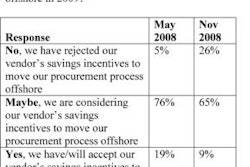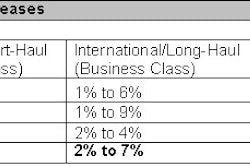Your business needs cash — to grow, to buy equipment, to seek new customers. But in today's tight credit markets, finding that cash from outside sources like bank loans or stock offerings is more difficult than ever before.
What's a business to do? You can (and should!) tighten your cash collections. You may even attempt to renegotiate better terms with your customers and suppliers.
But what most businesses fail to realize is that your accounts receivables hold hidden treasure — and lots of it. Best of all, you can capture this gold without upsetting customer and supplier relationships.
Let me explain what I mean.
There is cash to be found between service or shipment completion and cash in hand. "Days sales outstanding" (DSO) — the amount of cash between invoice creation and payment received — has been an important metric for companies in many industries for some time. Companies have been targeting this for years with mixed results.
So look further. What is not as well known is that there is cash elsewhere in the cycle — specifically before the invoice is created. This period between service completion and invoice creation is something we at Aveus call "days revenue outstanding," or DRO.
DRO (days before invoicing x dollars) exists only because of internal processing time. This is cash you have earned but can't yet touch. You can't even invoice yet. This time is seldom tracked and thus is much longer than most companies know. This cash needs to be, and can be, recovered.
The benefit to a business of reducing DRO can be huge. A company with $500 million in annual sales can have a DRO value of $1.4 million per day. If five days can be reduced in the cycle between service completion or shipment and invoice creation, the company can realize a $10 million one-time cash infusion back into its business, without asking the customer or your outside banker to do anything.
Beltmann Group Leverages DRO
A case in point: Beltmann Group Incorporated, a moving and storage company with three divisions and 13 offices across the U.S., has realized significant benefits from DRO. The company is a $100 million-plus provider of moving and logistics services. When the market for individual and corporate moves began to slow, the company sought to tighten cash flow by analyzing its internal processing of paperwork leading up to invoicing the customer. Steve Kosel, vice president of accounting, turned to Aveus to do the analysis.
Our charge was to analyze information flow from the time a move was completed to the final information and paperwork used for invoicing, assessing both speed and accuracy. We focused on the two major components to DRO: 1) time from the move date until the branch sent the information to the corporate office; and 2) time between the corporate office receiving the information from the branch and invoicing it to the customer.
We visited three branch offices to do a thorough analysis. We found it took an average of 10 days from the time a job was completed by the branch office until an invoice was sent out from the corporate office. We not only identified bottlenecks but suggested process changes that would streamline and accelerate the process. Finally, we recommended ways for Beltmann to continually measure DRO and hold people accountable.
The results have been impressive: the company has gone from a DRO average of 10 days down to six days, and is now focused on a goal of four days by yearend. Each day is significant because it represents nearly $300,000 in cash for the firm. Thanks to DRO, Beltmann today has a smaller operating loan with its bank, saving on interest. The additional cash that was tied up in receivables has allowed the company to pay down its line and inject $1.8 million into the business.
Kosel and the team at Beltmann continually monitor the state of DRO. "This is one thing we can hang our hat on, where we can make a positive impact. We publish our DRO internally each month and we keep talking to our branch and corporate people about it. From our owner on down, everyone knows how important this project is to our company," he says.
"Mining the Meaningful"
At Aveus we like to say, "See the whole — mine the meaningful." To see the whole picture, you need to look at your business from end to end. Examine how you move people, things and transactions between a customer order and cash received in the bank. Where is the cash unproductively sitting (or hiding) inside your business?
To find the amount of cash hiding under your DRO mattress:
Look within your own processes first to generate the cash you need. You might well be surprised at what you find under the mattress.
What's a business to do? You can (and should!) tighten your cash collections. You may even attempt to renegotiate better terms with your customers and suppliers.
But what most businesses fail to realize is that your accounts receivables hold hidden treasure — and lots of it. Best of all, you can capture this gold without upsetting customer and supplier relationships.
Let me explain what I mean.
There is cash to be found between service or shipment completion and cash in hand. "Days sales outstanding" (DSO) — the amount of cash between invoice creation and payment received — has been an important metric for companies in many industries for some time. Companies have been targeting this for years with mixed results.
So look further. What is not as well known is that there is cash elsewhere in the cycle — specifically before the invoice is created. This period between service completion and invoice creation is something we at Aveus call "days revenue outstanding," or DRO.
DRO (days before invoicing x dollars) exists only because of internal processing time. This is cash you have earned but can't yet touch. You can't even invoice yet. This time is seldom tracked and thus is much longer than most companies know. This cash needs to be, and can be, recovered.
The benefit to a business of reducing DRO can be huge. A company with $500 million in annual sales can have a DRO value of $1.4 million per day. If five days can be reduced in the cycle between service completion or shipment and invoice creation, the company can realize a $10 million one-time cash infusion back into its business, without asking the customer or your outside banker to do anything.
Beltmann Group Leverages DRO
A case in point: Beltmann Group Incorporated, a moving and storage company with three divisions and 13 offices across the U.S., has realized significant benefits from DRO. The company is a $100 million-plus provider of moving and logistics services. When the market for individual and corporate moves began to slow, the company sought to tighten cash flow by analyzing its internal processing of paperwork leading up to invoicing the customer. Steve Kosel, vice president of accounting, turned to Aveus to do the analysis.
Our charge was to analyze information flow from the time a move was completed to the final information and paperwork used for invoicing, assessing both speed and accuracy. We focused on the two major components to DRO: 1) time from the move date until the branch sent the information to the corporate office; and 2) time between the corporate office receiving the information from the branch and invoicing it to the customer.
We visited three branch offices to do a thorough analysis. We found it took an average of 10 days from the time a job was completed by the branch office until an invoice was sent out from the corporate office. We not only identified bottlenecks but suggested process changes that would streamline and accelerate the process. Finally, we recommended ways for Beltmann to continually measure DRO and hold people accountable.
The results have been impressive: the company has gone from a DRO average of 10 days down to six days, and is now focused on a goal of four days by yearend. Each day is significant because it represents nearly $300,000 in cash for the firm. Thanks to DRO, Beltmann today has a smaller operating loan with its bank, saving on interest. The additional cash that was tied up in receivables has allowed the company to pay down its line and inject $1.8 million into the business.
Kosel and the team at Beltmann continually monitor the state of DRO. "This is one thing we can hang our hat on, where we can make a positive impact. We publish our DRO internally each month and we keep talking to our branch and corporate people about it. From our owner on down, everyone knows how important this project is to our company," he says.
"Mining the Meaningful"
At Aveus we like to say, "See the whole — mine the meaningful." To see the whole picture, you need to look at your business from end to end. Examine how you move people, things and transactions between a customer order and cash received in the bank. Where is the cash unproductively sitting (or hiding) inside your business?
To find the amount of cash hiding under your DRO mattress:
- Assess your DRO process and the time-impact on cash
- Designate cash recovery as a priority in your company
- Determine the cash impact of slow cash velocity and the primary sources of lost time, lost quality and variation
- Identify opportunities for improving these issue areas
- Plan for change and plan for sustaining the gains
- Make it happen
Look within your own processes first to generate the cash you need. You might well be surprised at what you find under the mattress.









